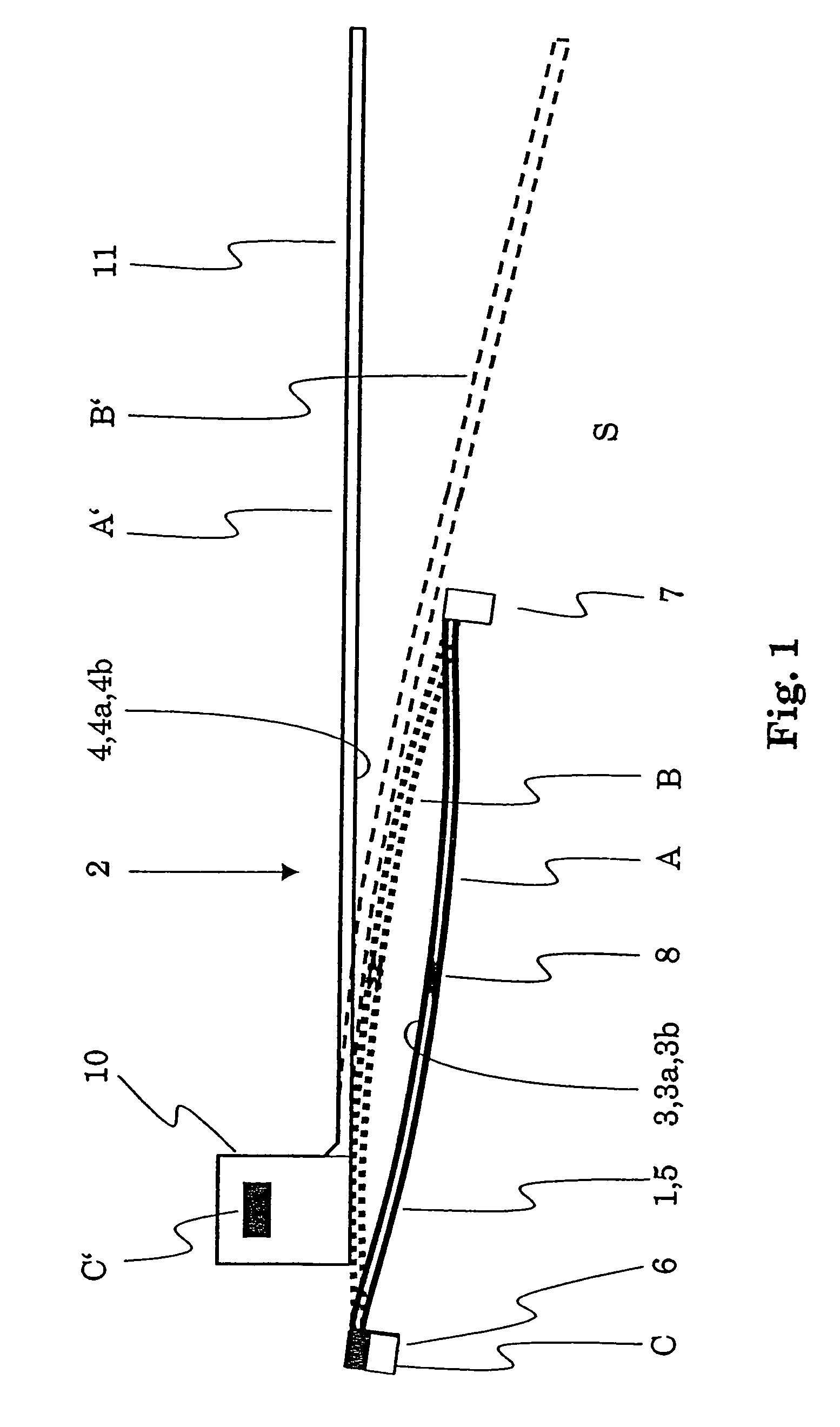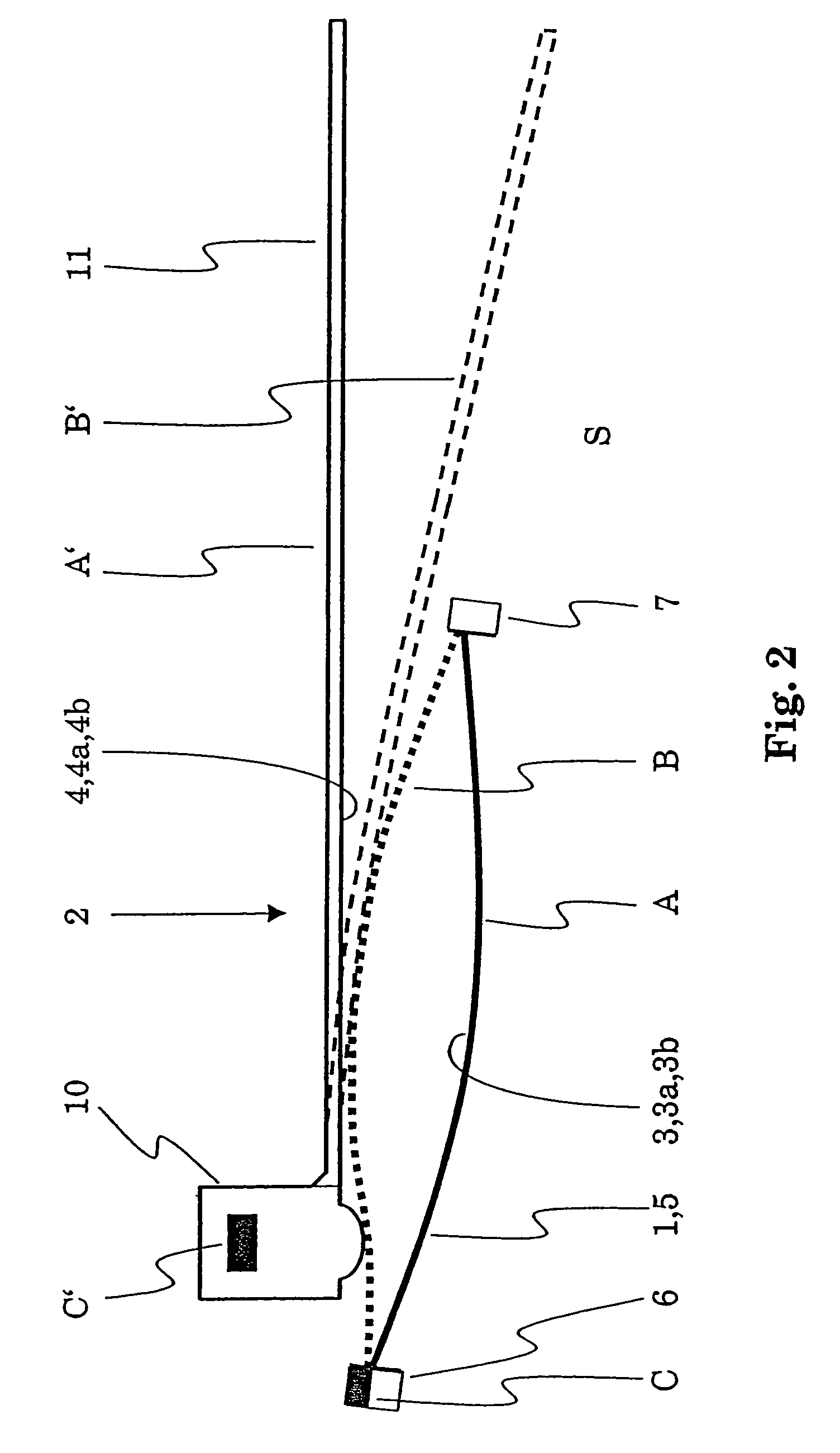Micro-electromechanical system and method for production thereof
a micro-electromechanical and micro-electromechanical technology, applied in the direction of contacts, basic electric elements, relays, etc., can solve the problems of difficult to achieve high reproducibility, achieve low switching voltage, improve switchability, and increase the effect of electrostatic force of attraction
- Summary
- Abstract
- Description
- Claims
- Application Information
AI Technical Summary
Benefits of technology
Problems solved by technology
Method used
Image
Examples
Embodiment Construction
[0017]It is thus the object of the invention to provide a micro-electromechanical system (MEMS) of the type specified initially which makes it possible to achieve a more flexible MEMS design. In particular, an improved switchability and new functionalities should be made possible. This object is solved by an MEMS having the features of claim 1.
[0018]Furthermore, it is an object of the invention to provide an improved method for MEMS manufacture. This object is solved by a method having the features of claim 21.
[0019]Improved switchability can, for example, mean that a switching process can be triggered at lower switching voltages. New functionalities can, for example, mean realising voltageless closed connections or microrelays with both voltageless open and voltageless closed connections.
[0020]The MEMS according to the invention comprises a substrate as well as a first micro-element and a second micro-element, wherein[0021]the first micro-element and the second micro-element are co...
PUM
 Login to View More
Login to View More Abstract
Description
Claims
Application Information
 Login to View More
Login to View More - R&D
- Intellectual Property
- Life Sciences
- Materials
- Tech Scout
- Unparalleled Data Quality
- Higher Quality Content
- 60% Fewer Hallucinations
Browse by: Latest US Patents, China's latest patents, Technical Efficacy Thesaurus, Application Domain, Technology Topic, Popular Technical Reports.
© 2025 PatSnap. All rights reserved.Legal|Privacy policy|Modern Slavery Act Transparency Statement|Sitemap|About US| Contact US: help@patsnap.com



